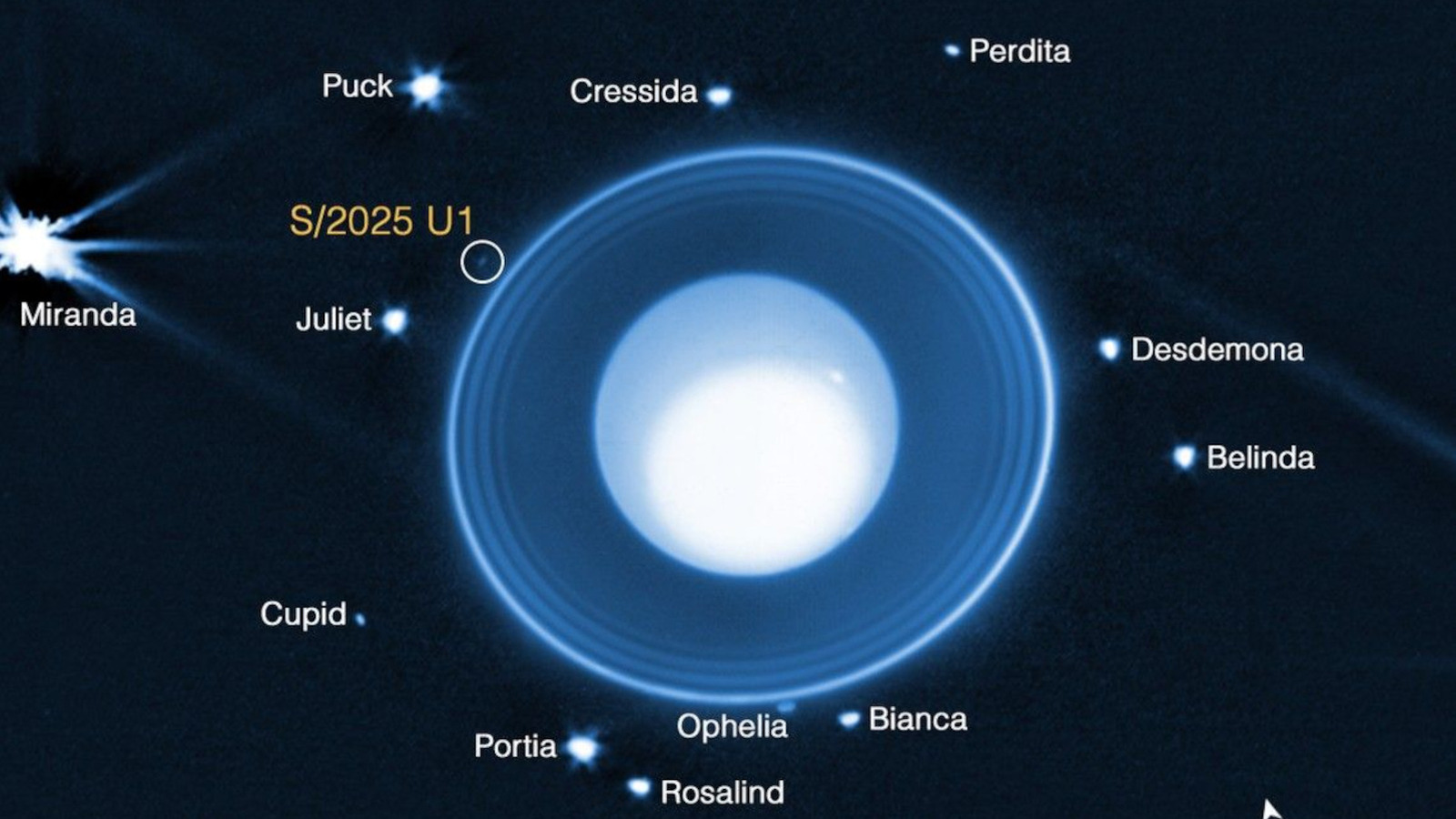A team of scientists from the Southwest Research Institute has discovered a new moon in our solar system, orbiting Uranus. Utilizing imaging from the James Webb Space Telescope, researchers identified this previously unknown moon, designated S/2025 U1, which measures only six miles in diameter. The moon’s “nearly circular” orbit positions it approximately 35,000 miles from the center of Uranus, about 15% of the distance between the Earth and our own Moon.
This discovery marks a significant advancement in understanding the Uranian system. The moon was detected through a series of ten 40-minute exposures taken by Webb’s Near-Infrared Camera, revealing details that had eluded previous missions, including the Voyager 2 spacecraft, which passed by Uranus over 40 years ago. This tiny moon joins the ranks of Uranus’ other 28 known moons, all of which reside within the planet’s rings.
Understanding Uranus’ Unique Moon System
The presence of numerous small moons around Uranus is notable. As Matthew Tiscareno, a member of the research team, explained, “No other planet has as many small inner moons as Uranus, and their complex inter-relationships with the rings hint at a chaotic history that blurs the boundary between a ring system and a system of moons.”
The origins of these moons and rings are subjects of ongoing research. Events such as a moon being torn apart by gravitational forces can lead to the formation of rings from the resulting debris. Over time, if this material accumulates and exerts its own gravitational pull, it may eventually coalesce into a new moon. The discovery of S/2025 U1 provides researchers with a valuable opportunity to study these processes in more detail.
What’s Next for S/2025 U1?
Currently, S/2025 U1 lacks a more inspiring name, as its designation is quite technical. In contrast, Uranus’ other moons boast names from literary figures, including Ophelia, Bianca, and Puck—characters drawn from the works of William Shakespeare and Alexander Pope. The International Astronomical Union, responsible for naming celestial bodies, is expected to select a name that reflects this rich literary tradition.
Meanwhile, the James Webb Space Telescope continues its mission, operating at the second Lagrange point between the Earth and the Sun. As NASA manages the telescope, various scientific teams can propose missions through the General Observers program. This collaborative effort enabled the discovery of S/2025 U1, illustrating the ongoing exploration of our solar system.
As researchers continue to analyze data from Webb, the excitement surrounding discoveries like S/2025 U1 reminds us that there is still much to learn about our cosmic neighborhood. The universe may hold more secrets, waiting to be uncovered through the lens of advanced technology.








































































